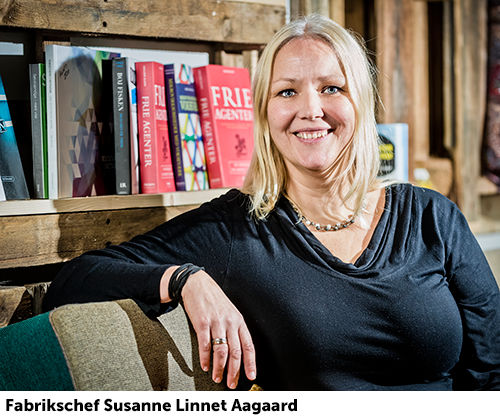
Business building blocks
As a fast moving industry that throws up the new challenges of constant innovation, toys might not be the first sector that comes to mind. But it transpires that keeping children interested in and happy with their playthings can be a bit of a challenge, and one that Lego has been facing since its foundation in 1932.
With use of the internet, its latest solution to this problem is to use a popular business technique which involves bringing in problem solving from outside a company to provide fresh ideas. And who are the people to whom Lego has turned? Its customers.
Lego Ideas is a web platform that encourages customers to create their own designs and market them to other users, whose votes push their ideas onto shelves for people to buy. It's just one successful example of crowdsourcing - an important new business concept for all sectors.
The theory of the crowd
Susanne Rubæl is a well-known Danish author of a book about the phenomenon of crowdsourcing. 
"It is a brand new way to do business and an alternative method to solve concrete problems or challenges," she says. "The method is incredible good to incorporate the latest knowledge, the best ideas and the really good solutions".
Crowdsourcing can be highly diverse, but what is common to all of them is that individuals, companies and organisations place an inquiry an ‘open call’ on a platform for idea-generation. Here they can ask someone outside their usual network for help to find the best solution to their challenge.
The approach can also be used internally, in companies where other employee group than the usual can be asked for help to solve a task. "It is not only the most innovative, visionary companies that use it - it's also the brightest," she adds.
What is it being used for?
There are no limits to what Crowdsourcing can be used for: product development, improve customer service, consumer research, ideas for marketing – yes, the list is almost endless.
Scandic Hotels has used a site called Ideahunters.dk to collect ideas on how to raise awareness of their meeting rooms.
Some companies have managed to build their entire business on crowd sourced ideas. Among others, the future hotel chain Amberlair shape their entire concept based on their 'crowd'. The hotels' location, décor and supplies will result from the collected ideas.
The benefits by using crowdsourcing
When crowdsourcing, the most innovative ideas often comes from a completely unexpected corner, says Susanne Rubæk. "If you are always looking for solutions in the traditional way, you don’t get access to the valuable idea bank that comes from crowdsourcing."
The best ideas often come from those who have a peripheral professional knowledge to the area or is completely extraneous, she explains.
"Non-specialists have observed something that specialists have not noticed, but the specialists can then work on it, once the idea has been suggested."
While crowdsourcing offers access to visionary ideas, it also provides the opportunity to get ahead of possible disruptive development in the industry. Salim Ismail, founder of Singularity University, has told The Wall Street Journal that the phenomenon will be a key tool for both companies' innovation and their survival.
If the customers involved, crowdsourcing gives the opportunity to develop solutions that are tailored to the customer needs. At the same time, from a marketing and branding perspective, the company is being profiled to potential markets in an innovative way. To make matters better, crowdsourcing is usually very cheap – and in some cases absolutely free.
Advice for your crowdsourcing
If you want to start crowdsourcing, it is important to prepare yourself thoroughly, says Rubæk. It is not an easy shortcut, but a new way of working, which - like everything else - requires preparation.
First of all, choose your 'crowd' carefully. It is important to reach out to the segment you want, but at the same time you should not prevent yourself from getting ideas from an unpredictable group of people.
"Do not fall into the trap of experts - the popular perception that people with great knowledge in a particular area are the right people to ask, which is not always right. You should of course ask them, but on an equal footing with others. Studies clearly show that the answers to especially innovative challenges often come from unexpected quarters," emphasizes Susanne Rubæk.
It is furthermore important to ask simple questions in your "open call", she adds: "Keep it simple - do not ask your crowd too many things at once. Then the answers will either appear absent or bristle in all directions."
Customer focus
The most important thing, as always, is to consider the customer. For product research, always crowdsource from the crowd you intend to sell to. BMW has introduced a customer design feature on its 'Connected Drive' site, which mines ideas about the design and customisation of cars from people already researching them.
Getting started is not that difficult. Use BoardofInnovation.com to research more ways of crowdsourcing and platforms to source from. There is already a plethora of platforms that you can use when you need to crowd source. If you can't find one, you can always follow the example of Lego, and build one.
Read more about Crowdsourcing:
Research & Development platforms


